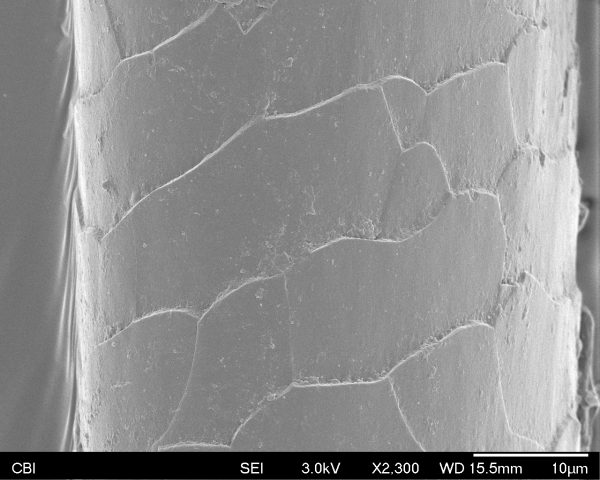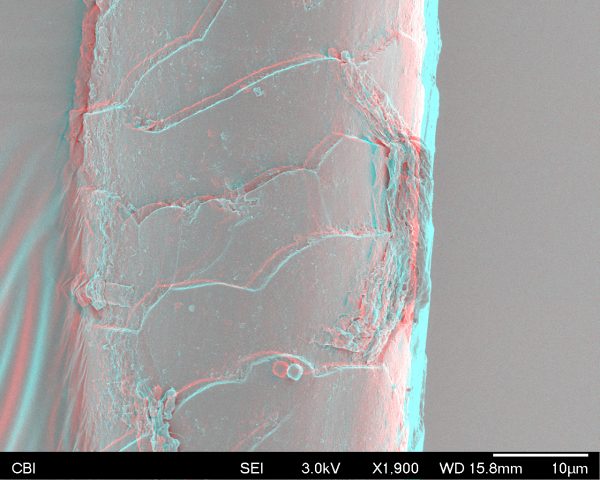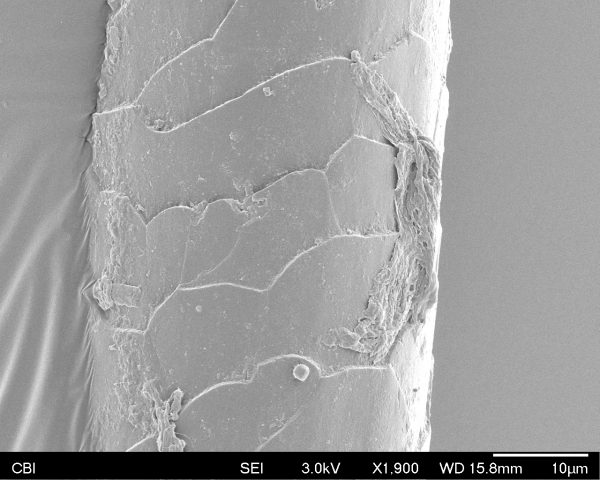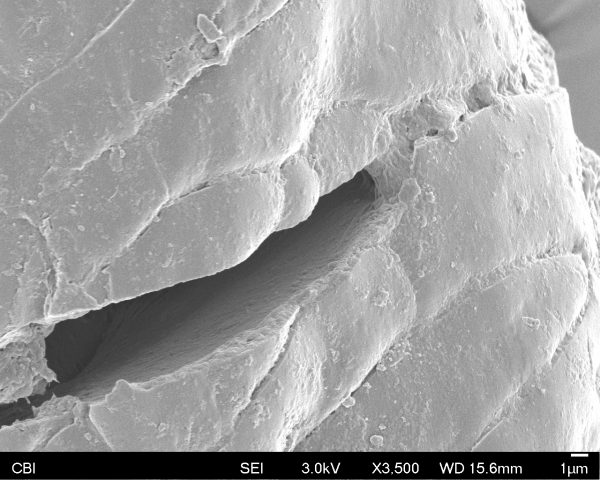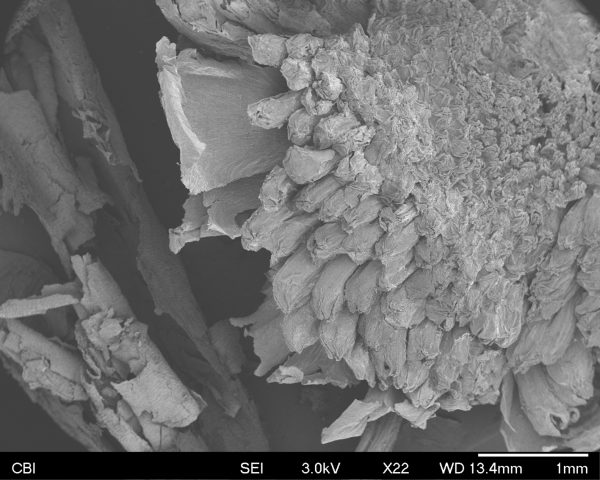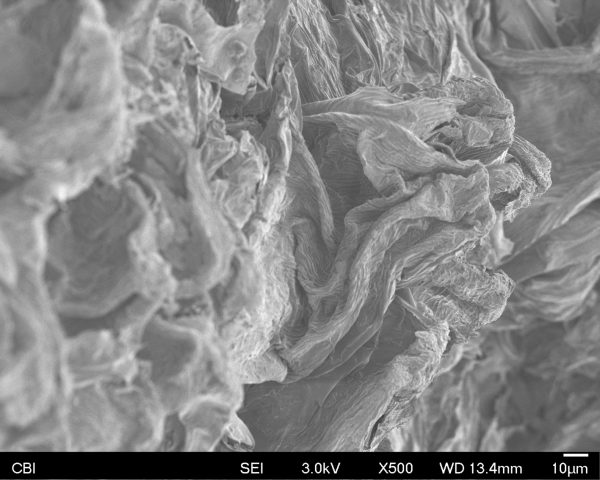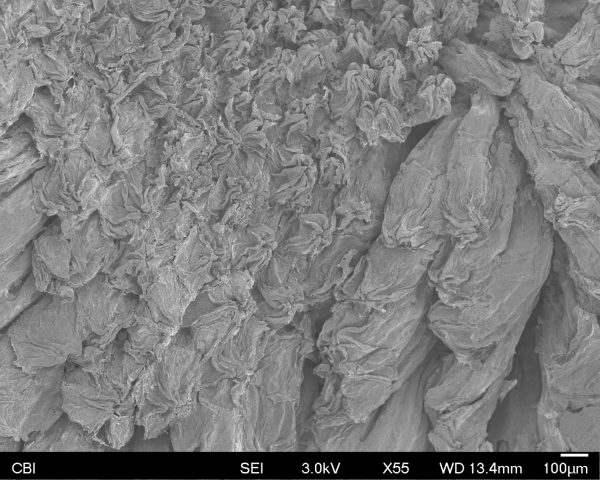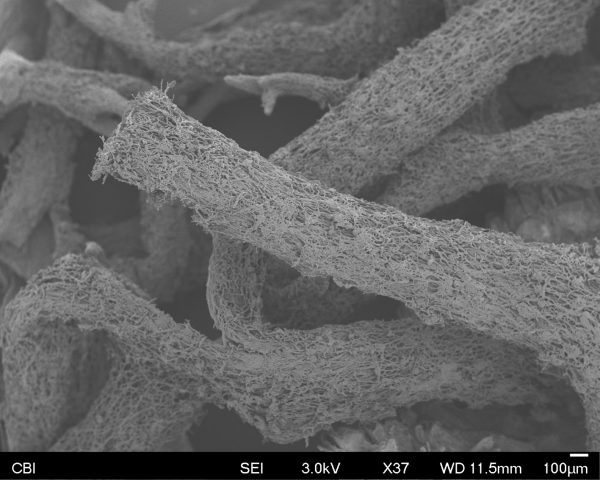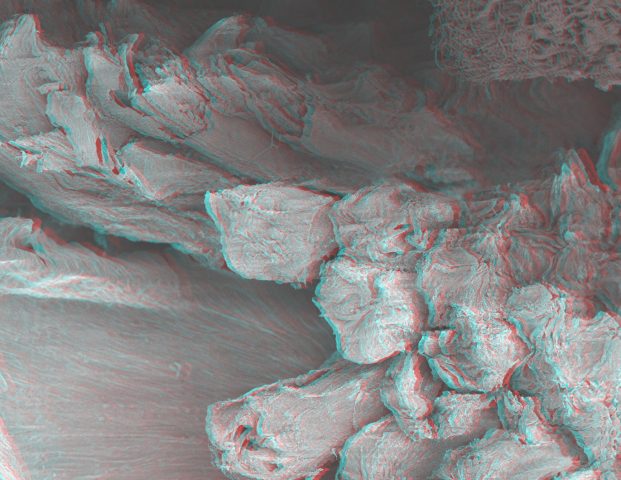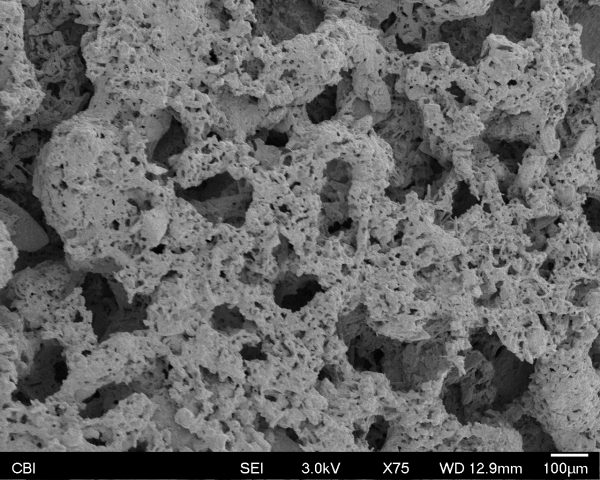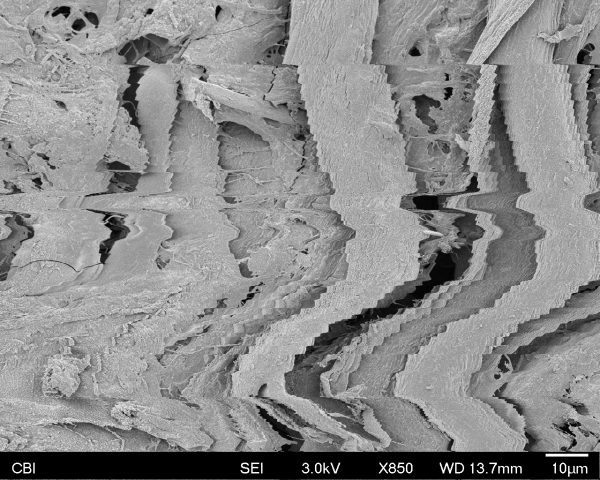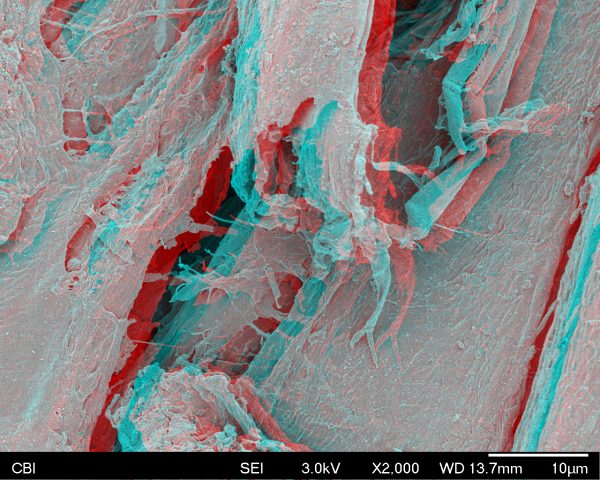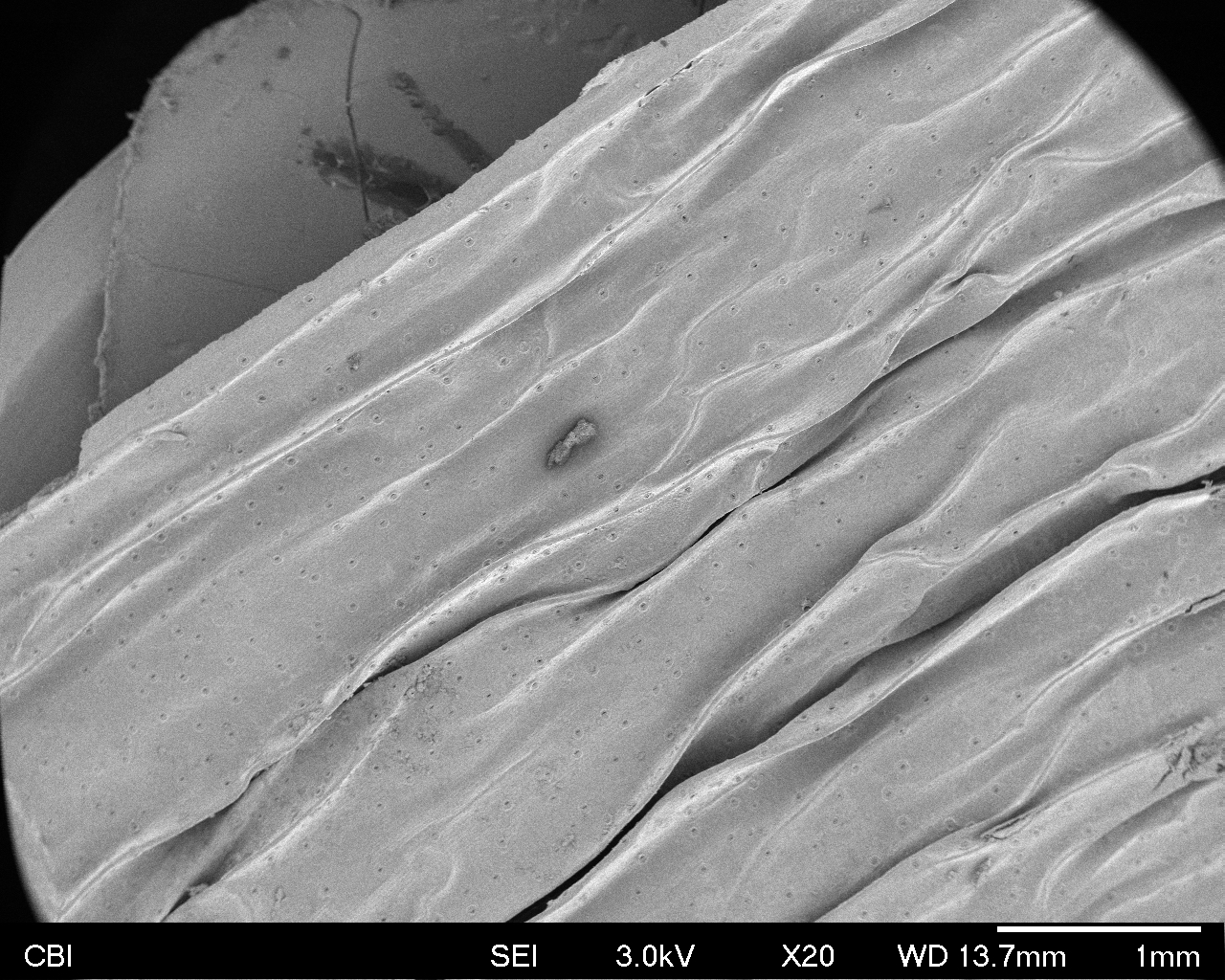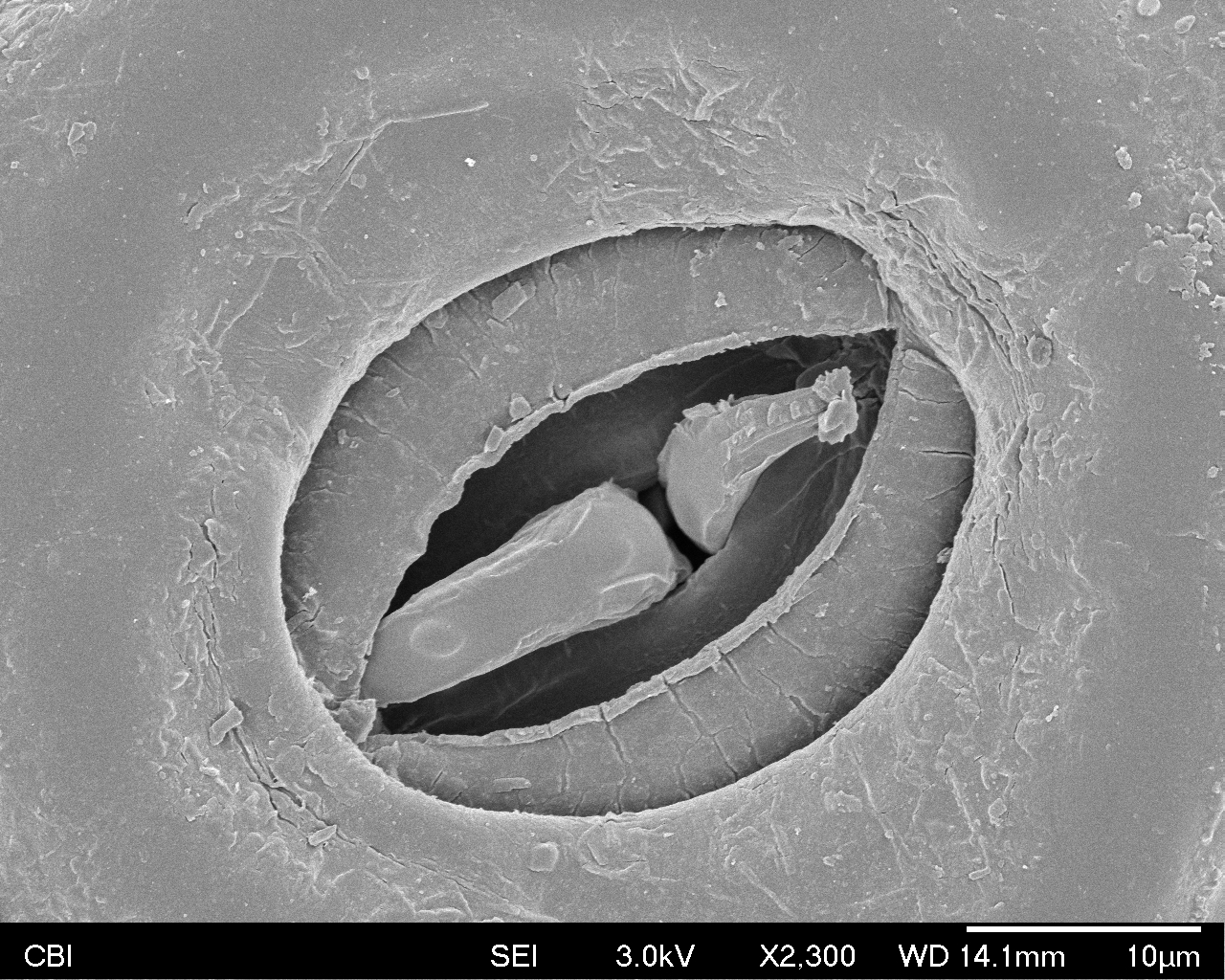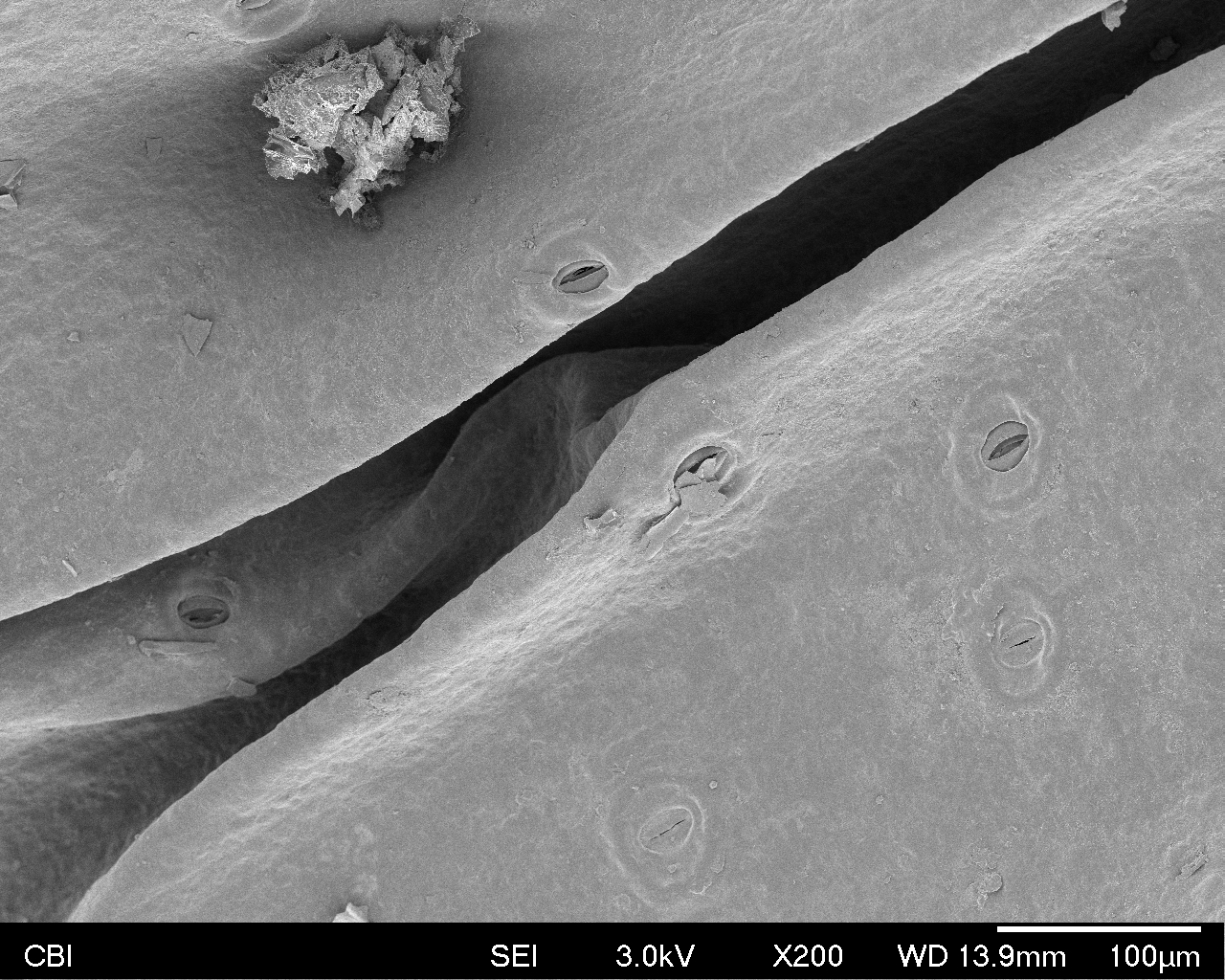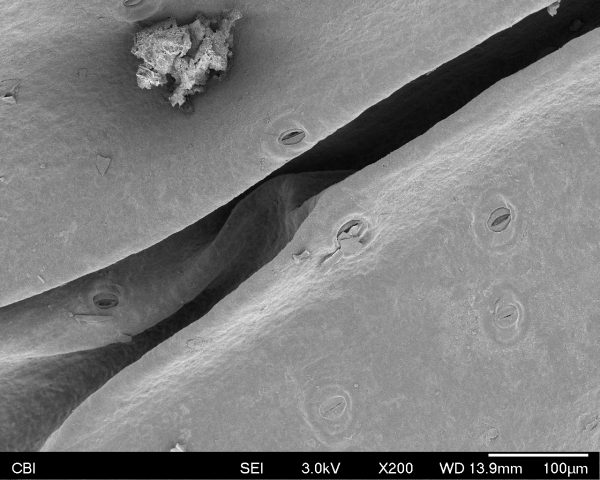Please find my SEM results bellow of a piece of dry skin. For reference, these flakes are small enough to fit on a head of a pin;
Familiar view;
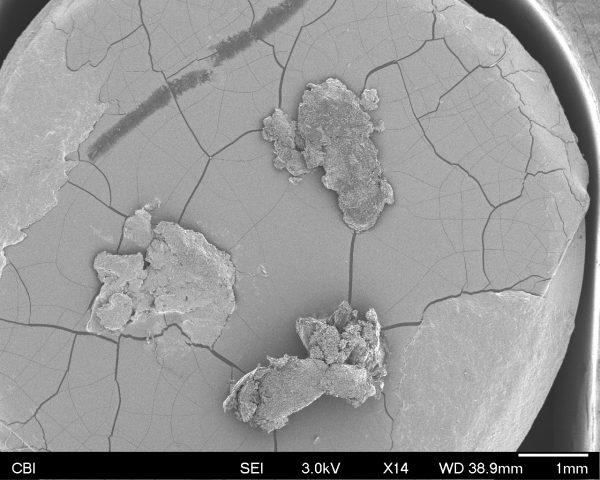
Detail shots/Unfamiliar Views
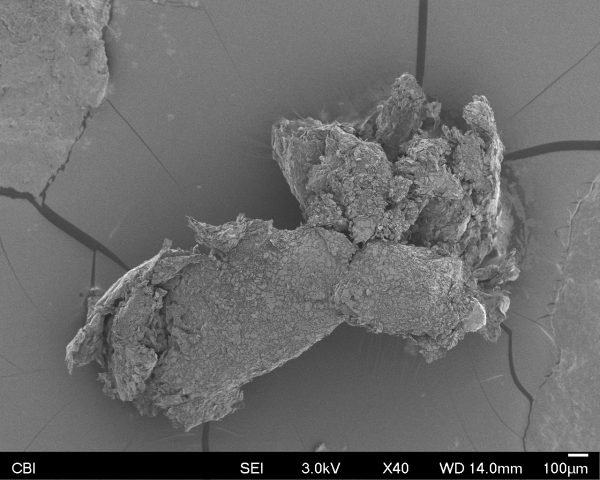
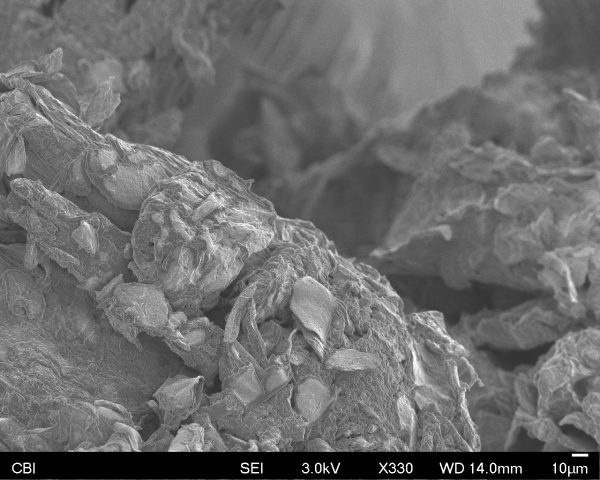
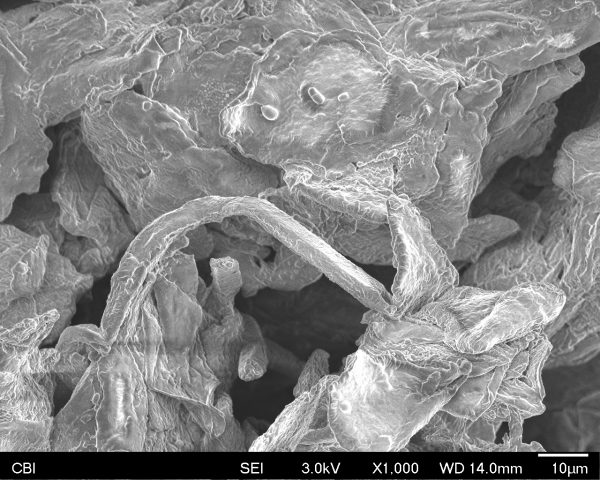
StereoPairs
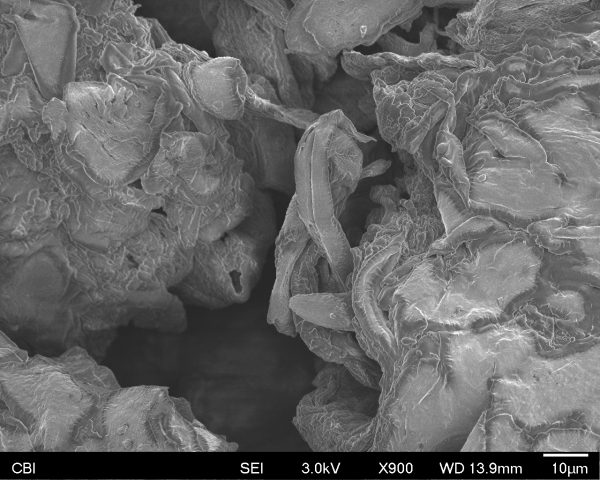
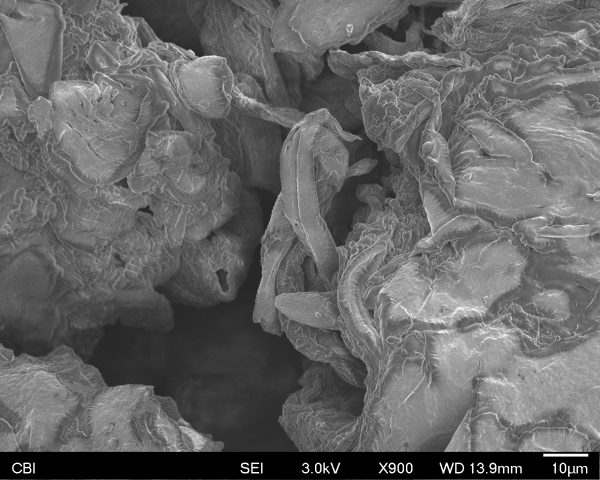
Experience
Donna can testify that I was really surprised and delighted by my experience. I think what caught me so off guard was how layered dead skin is and how it interacts with each other. The first thing I thought when I was looking at it under the microscope, is that it looks like a tiny cave where some kind of creature should live! The flakes definitely inspired me to design a world and a creature to exist in this space. It was pretty mind-blowing to think that came off of my body and has so much detail for something that was just a spec on my clothes.
Donna was telling Nica and I that it would be difficult to get the stereopairs done correctly because of where my sample was located on the disk. Apparently some positions favor the process more than others, but we gave it a shot anyway!

